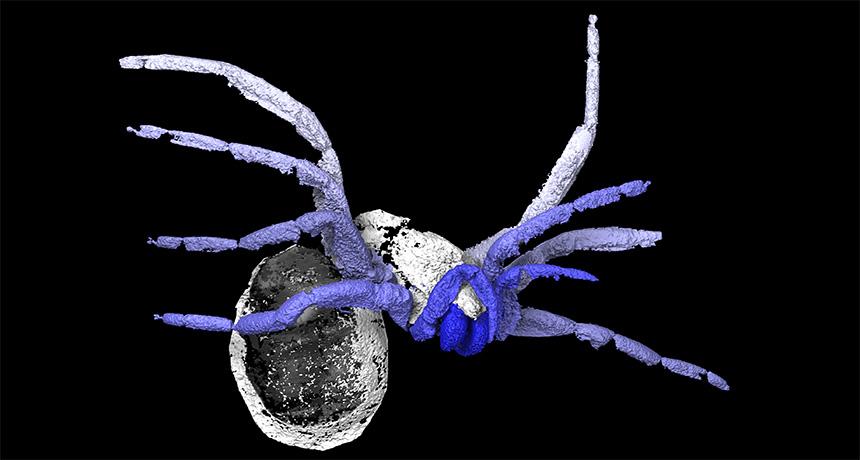Questions investigated
Where did arachnids evolve from? What is the oldest example of a spider, a scorpion, a harvestman or a mite, and are there any ‘missing links’ revealing how they acquired their modern forms? Where do extinct arachnids fit into the tree of life, and can they help to show how different groups are related to one another? These are typical research questions being addressed. As a framework, a regularly updated catalogue of all fossil arachnids and their relatives is produced, which summarises our knowledge of the arachnid fossil record and at the same time offers molecular biologists a reliable dataset to calibrate their evolutionary trees.
Methodology
Fossil arachnids are studied from whatever sources are available; with a particular focus in recent years on the Devonian Rhynie Chert from Scotland, the Carboniferous Coal Measures of Europe and North America and various ambers, in particular Cretaceous Burmese amber and the Paleogene Baltic and Bitterfeld amber. Fossils are studied using traditional methods (light microscopy, image stacking and drawing) as well as modern techniques such as computed tomography. The zoological arachnid collections in the museum serve as an invaluable source of modern animals for comparative study.
Selected publications
- Wang, B., Dunlop, J. A., Selden, P. A. Garwood, R. J., Shear, W. A., Müller, P. & Lei, X.-j. 2018. Cretaceous arachnid Chimerarachne yingi gen. et sp. nov. illuminates spider origins. Nature Ecology and Evolution, 2: 614–622.
- Dunlop, J. A., Apanaskevich D. A., Lehmann, J., Hoffmann, R., Fusseis, F., Ehlke, M. Zachow, S. &. Xiao, X. 2016. Microtomography of the Baltic amber tick Ixodes succineus reveals affinities with the modern Asian disease vector Ixodes ovatus. BMC Evolutionary Biology 16: 203.
- Garwood, R. J., Dunlop, J. A., Selden, P. A., Spencer, A. R. T., Atwood, R. C., Vo, N. T. & Drakopoulos, M. 2016. Almost a spider: a 305-million-year-old fossil arachnid and spider origins. Proceedings of the Royal Society B, 283: 20160125.
